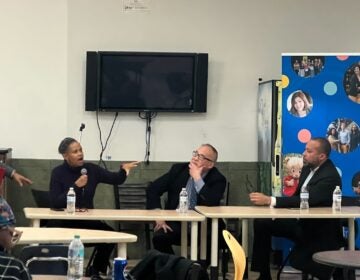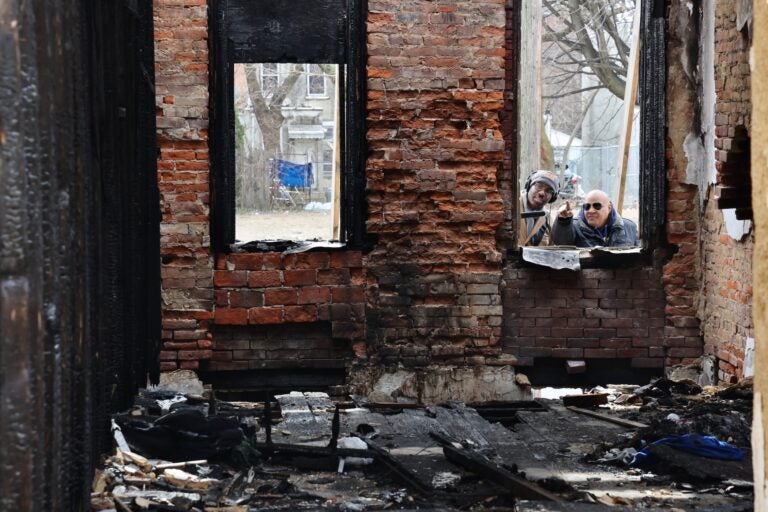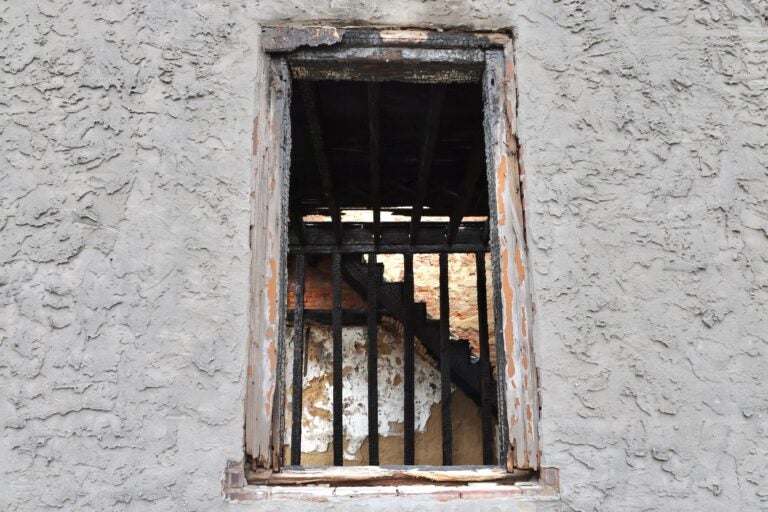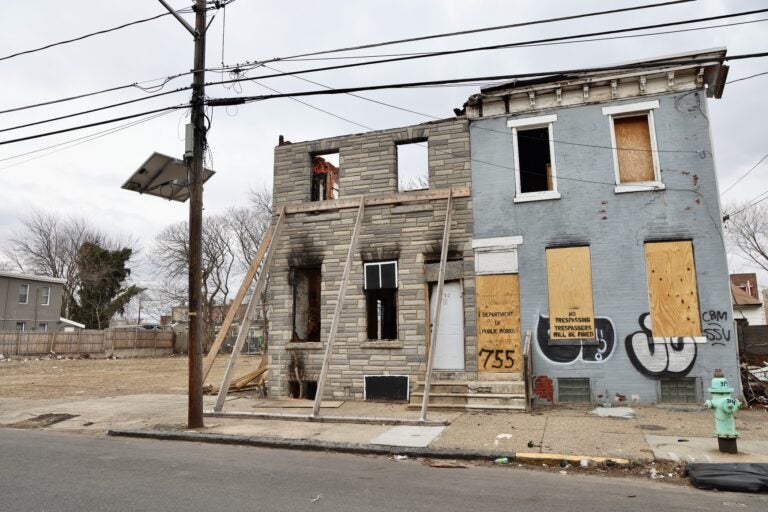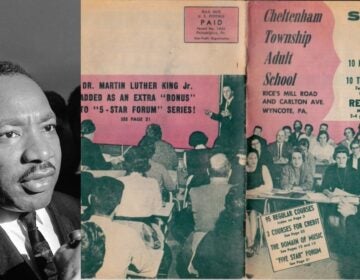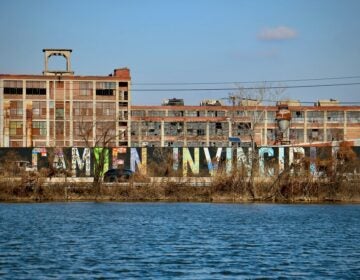Restoring history: Renovations begin at the Camden house where Rev. Dr. Martin Luther King Jr. once lived
The house was badly damaged by a fire two years ago. The restoration work to turn it into a museum is expected to be completed by 2026.
From Camden and Cherry Hill to Trenton and the Jersey Shore, what about life in New Jersey do you want WHYY News to cover? Let us know.
Two years ago, a fire destroyed the historic Camden home where the Rev. Dr. Martin Luther King Jr. lived as a student. Pastor Amir Khan, president of New Beginnings Behavioral Health, is restoring the ravaged home in the Bergen Square neighborhood to honor Dr. King’s legacy.
A groundbreaking ceremony was held in December. The renovation will begin next month. Contractors will attempt to frame the home so they are able to walk into the structure by the end of summer, Khan said.
Yocontalie Jackson, a curator for the Camden County Historical Society, said it was critical to preserve the house in Camden, noting that it was where King’s fight for civil rights began.
“To have this house preserved and be able to continue to say ‘This is a part of our history’ means a lot, because so many people don’t know about it,” she said.
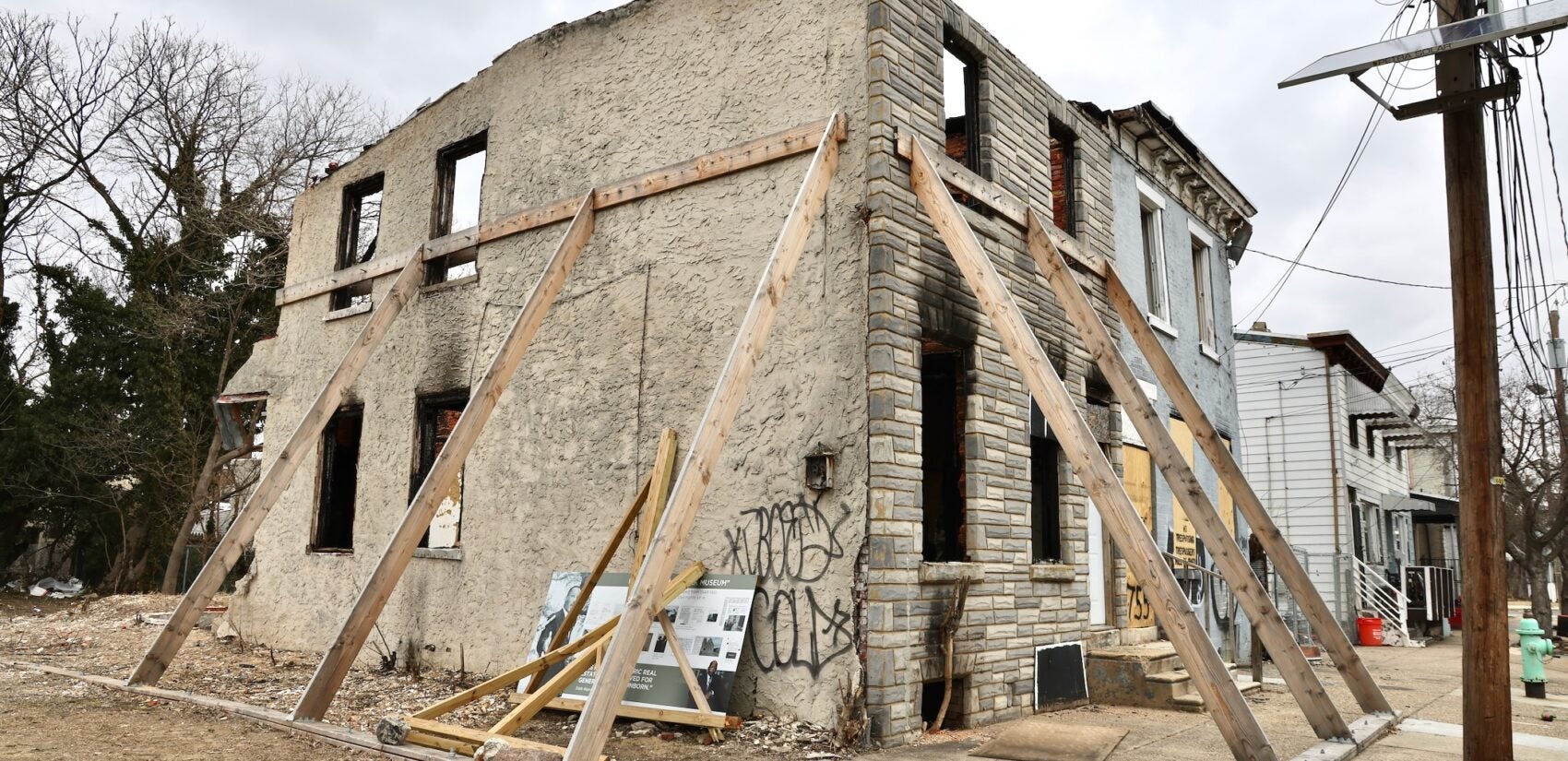
Dr. King’s connection to Camden
Dr. King rented a room at the Walnut Street home between 1948 and 1951, when he studied at the Crozer Theological Seminary, a Baptist seminary school in Upland, Pennsylvania. As a student, he divided his time between Camden and the seminary campus.
At that time, Benjamin Hunt owned the home, which his daughter-in-law, Jeanette Lilly Hunt, later inherited from him. Khan said King was more comfortable in Bergen Square, a historically Black Camden neighborhood, than across the Delaware River in a mostly white area.
“Dr. King did a lot of preaching at various churches in this area,” he said.
The home was also where King planned one of his first civil rights protests. There is documented evidence of an incident in 1950, when King and a few friends went to a local tavern, Mary’s Café, after attending a church service. The tavern’s owner, Ernest Nichols, refused to serve them. Nichols reportedly stomped out of the bar and returned with a revolver, firing bullets into the sky. King and his friends tried to file a complaint at the Maple Shade police station. The department refused to register a case, until the Camden NAACP got involved.
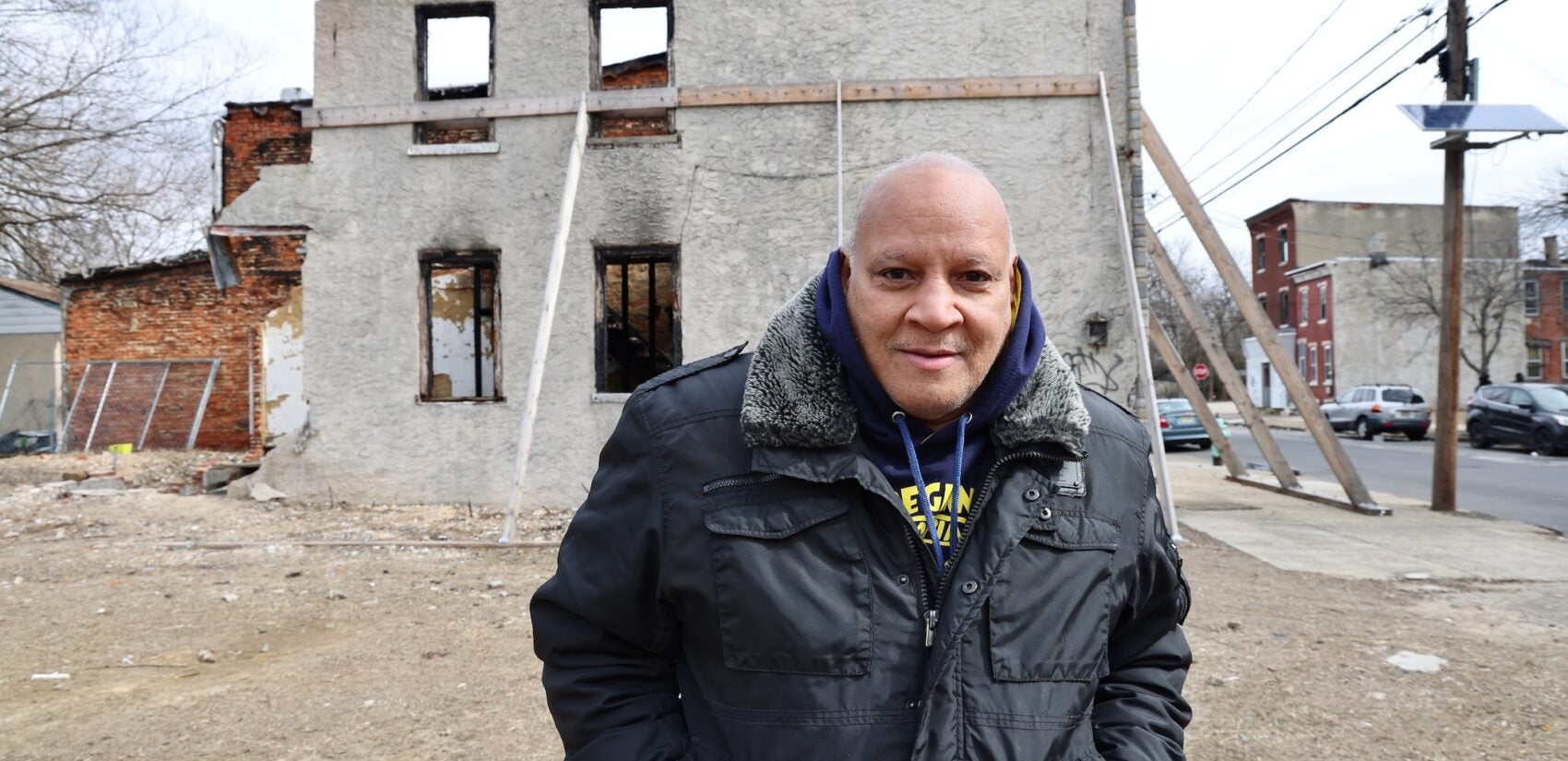
How badly was Dr. King’s Camden home damaged in the fire?
For two decades, the house lay vacant. Then a flame engulfed it. It is not clear what caused the fire. When fire investigators assessed the damage, it was unsafe for them to enter the structure. The façade and the side of the house is currently propped up by beams. The back half of the house has been demolished, exposing the inside to the elements.
But there are still features that are salvageable, Khan said, such as the steps leading to the second-floor bedroom where King stayed.
“We’re keeping them because we want people to be able to walk as much as they can, where Dr. King walked, and go up the stairs and things like that,” Khan said.
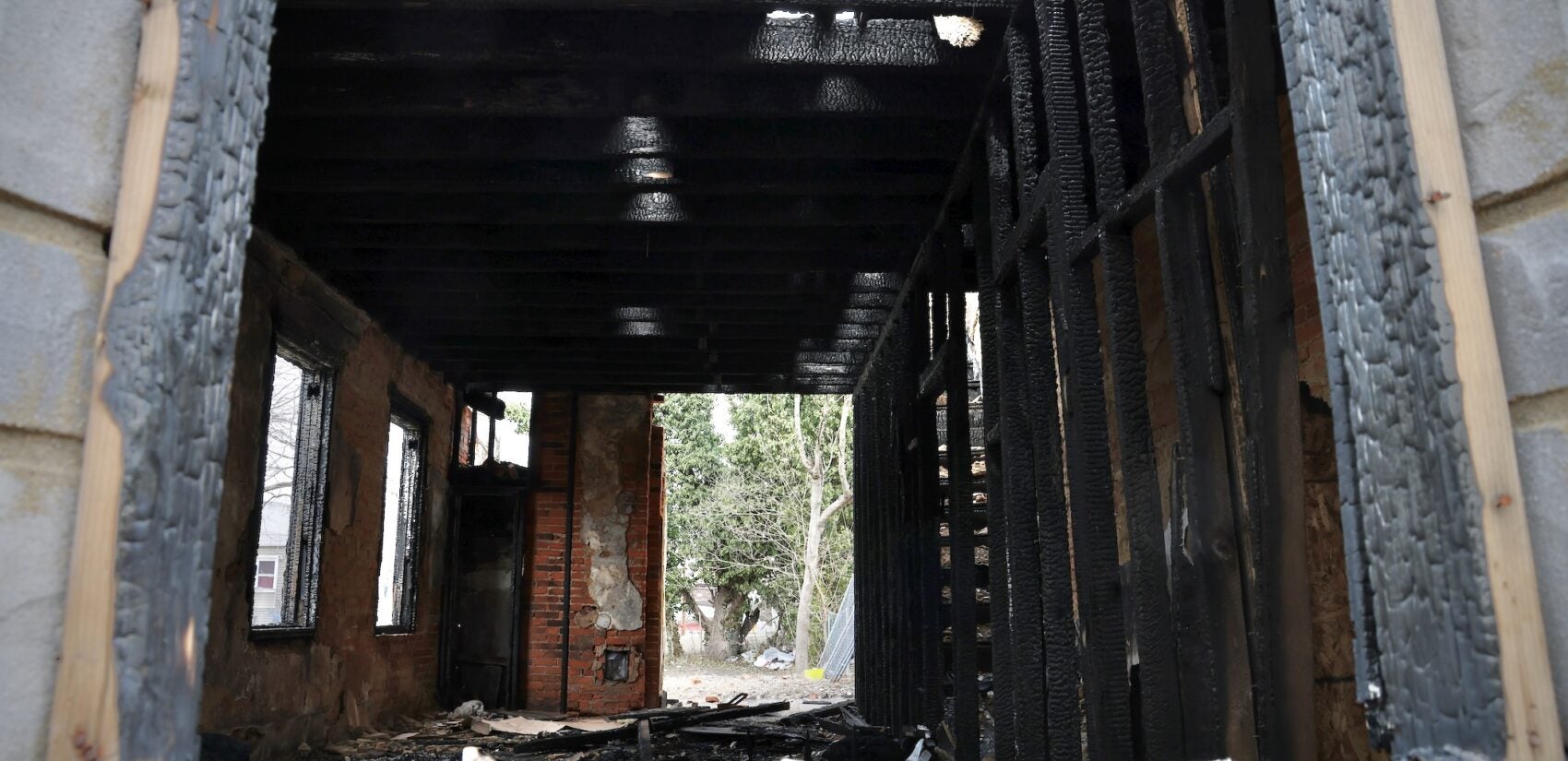
Martin Luther King House: Preserving King’s legacy
Initially, Jeanette Lilly Hunt’s vision was to turn the house into a museum. But an initial effort fizzled out and the fire happened. Now, Khan wants to fulfill that dream.
Khan, whose organization purchased the house in 2021, plans to make the now-christened Martin Luther King House as a museum to preserve the history of the civil rights leader’s early days as a seminary student.
In addition to showing where King ate and slept while he was studying, the museum will include exhibits that show King’s connection to the city of Camden and his stay at Crozer. There will also be a film featuring a reenactment of the incident that led to King’s first civil protest in Maple Shade.
Khan said he will need to raise another $150,000 to $200,000 to finish the entire project, which he hopes will be completed by the end of 2026.
WHYY is your source for fact-based, in-depth journalism and information. As a nonprofit organization, we rely on financial support from readers like you. Please give today.



